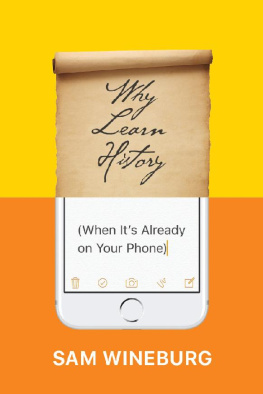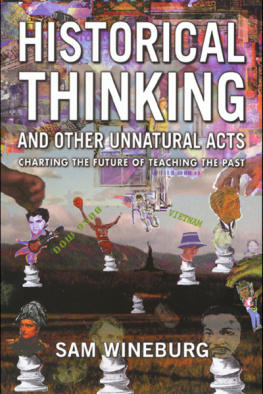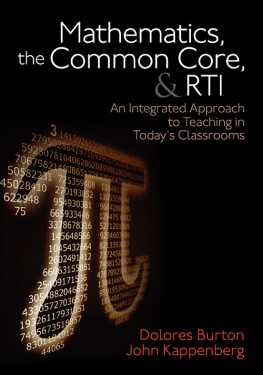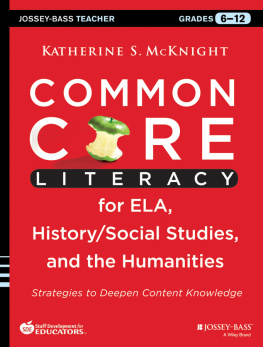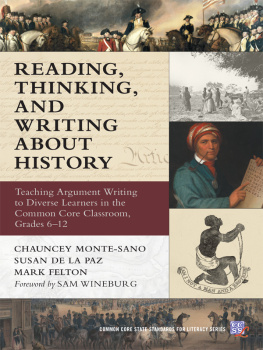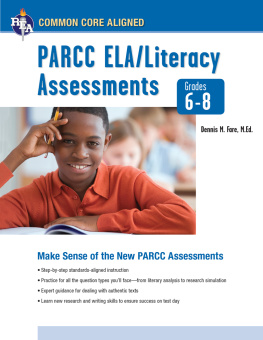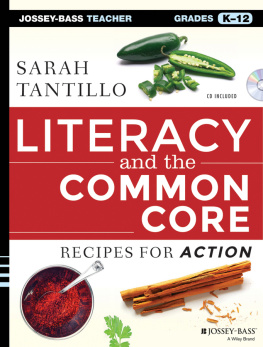Sam Wineburg - Reading Like a Historian: Teaching Literacy in Middle and High School History Classrooms
Here you can read online Sam Wineburg - Reading Like a Historian: Teaching Literacy in Middle and High School History Classrooms full text of the book (entire story) in english for free. Download pdf and epub, get meaning, cover and reviews about this ebook. year: 2012, publisher: Teachers College Press, genre: Home and family. Description of the work, (preface) as well as reviews are available. Best literature library LitArk.com created for fans of good reading and offers a wide selection of genres:
Romance novel
Science fiction
Adventure
Detective
Science
History
Home and family
Prose
Art
Politics
Computer
Non-fiction
Religion
Business
Children
Humor
Choose a favorite category and find really read worthwhile books. Enjoy immersion in the world of imagination, feel the emotions of the characters or learn something new for yourself, make an fascinating discovery.
- Book:Reading Like a Historian: Teaching Literacy in Middle and High School History Classrooms
- Author:
- Publisher:Teachers College Press
- Genre:
- Year:2012
- Rating:5 / 5
- Favourites:Add to favourites
- Your mark:
Reading Like a Historian: Teaching Literacy in Middle and High School History Classrooms: summary, description and annotation
We offer to read an annotation, description, summary or preface (depends on what the author of the book "Reading Like a Historian: Teaching Literacy in Middle and High School History Classrooms" wrote himself). If you haven't found the necessary information about the book — write in the comments, we will try to find it.
Featuring an expanded introduction, this award-winning bestseller has been updated to link curriculum to the Common Core State Standards.
This popular text shows how to apply Wineburgs highly acclaimed approach to teachingReading Like a Historianto middle and high school classrooms, increasing academic literacy and sparking students curiosity. Each chapter begins with an introductory essay that sets the stage of a key moment in American historybeginning with exploration and colonization and the events at Jamestown and ending with the Cuban Missile Crisis. Primary documents, charts, graphic organizers, visual images, and political cartoons follow each essay, as well as suggestions for where to find additional resources on the Internet and guidance for assessing students understanding of core historical ideas.
Reading Like a Historian helps teachers use textbooks creatively and provides a wealth of ideas for how historical instruction can enhance students skills in reading comprehension.
For years, bands of educators have been trying to free history instruction from the mire of memorization and propel it instead with the kinds of inquiry that drive historians themselves. Now, the common-core standards may offer more impetus for districts and schools to adopt that brand of instruction. . . . The Reading Like a Historian program . . . is getting a new wave of attention as teachers adapt to the Common Core State Standards in English/language arts. Those guidelines, adopted by all but four states, demand that teachers of all subjects help students learn to master challenging nonfiction and build strong arguments based on evidence.
Education Week Spotlight (July 30, 2012)
This is what research dissemination is all about if we ever want to make a positive difference in students lives and our own futures.
Teaching History: A Journal of Methods
All educators who want to promote deeper understanding should read and use this wonderful book.
Linda Darling-Hammond, Stanford University
The focusing questions, the teaching tips, and the primary sources make it possible for any teacher of history and social studies to help students become more interested, careful, and effective in handling information.
Grant Wiggins, president, Authentic Education
What a great resource for teachers of history! This book explains how teachers can help students bring a critical eye to history, teaching ways of thinking that they can use in all of their studies.
Diane Ravitch, New York University
Sam Wineburg: author's other books
Who wrote Reading Like a Historian: Teaching Literacy in Middle and High School History Classrooms? Find out the surname, the name of the author of the book and a list of all author's works by series.


